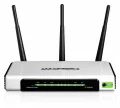TP-Link TL-WR843ND router review
TP-Link introduced the TL-WR843ND router in 2013. It is powered by Atheros AR9341 @ 533 MHz chipset, 32 MB of RAM, and 4 MB of flash memory.
Want to know if this TP-Link router stands out? Keep reading to know!
Table of Contents
- TP-Link TL-WR843ND specifications
- Body, dimensions, weight
- System, chipset, RAM, flash, power supply
- Network, protocols, WAN and LAN ports
- Wireless, antennas, speed, security
- Connectivity
- Administration, user interface, login information
- Links
- Verdict, Pros and Cons
- Photos
- Comparisons
Our personal experiences and opinions form the basis of this article. We aimed to share insights on a topic, and we hoped others would find it useful and inspirational. If you noticed any mistakes or missing details about the TP-Link TL-WR843ND, please let us know.
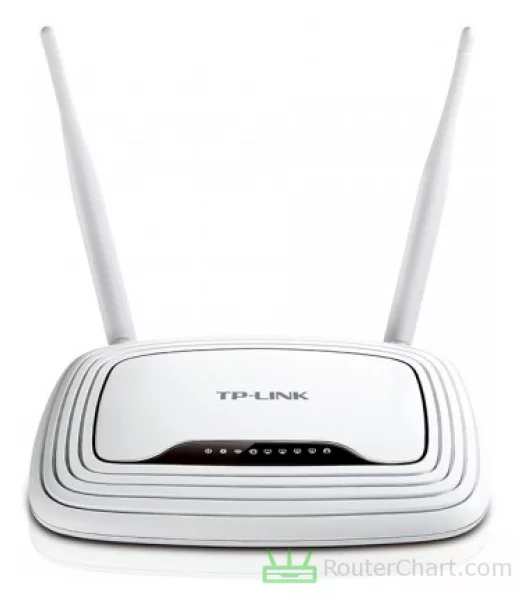
The TL-WR843ND has a user-friendly interface, it's suitable for users with varying levels of experience. TP-Link has a history of introducing innovative features and technologies into its products.
TP-Link TL-WR843ND specifications
| Brand | TP-Link |
|---|---|
| Name | TL-WR843ND |
| Type | TL-WR843ND |
| Rating | |
| Launch | 2013 |
Body
| Dimensions | 192 x 130 x 33 mm |
|---|
If you plan to move a lot and need to take your router with you, the size is important. Otherwise, the size isn't too crucial.
System
| Chipset | Atheros AR9341 @ 533 MHz |
|---|---|
| RAM | 32 MB |
| Flash | 4 MB |
| OS | TP-Link |
| Power supply | 9 V / 0.85 A |
The Atheros AR9341 @ 533 MHz CPU provides processing power. The 32 MB of RAM helps the router manage many tasks concurrently
Network
| Protocols | IPv4 IPv6 |
|---|---|
| LAN ports | 4 x 10/100 Mbps |
| WAN ports | 1 x 10/100 Mbps |
| Mobile network | no |
| VPN support | no |
The router also supports IPv6. This allows you to use the latest Internet Protocol. The TL-WR843ND features a Fast Ethernet WAN port that has a maximum speed of 100 Mbps.
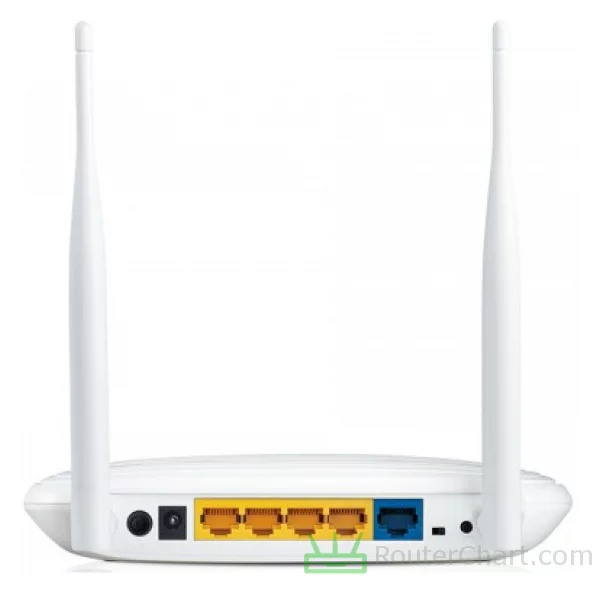
Wireless
| Antennas | 2 x 5 dBi RP-SMA |
|---|---|
| 2.4 GHz | yes |
| 5 GHz | no |
| 60 GHz | no |
| Standards | IEEE 802.11b/g/n |
| Class | N300 |
| Speed | 300 Mbps |
| Transmit power | 20 dBm |
| Security | WEP WPA WPA2 WPS |
| Guest network | no |
The TL-WR843ND is compatible with 2.4 GHz Wi-Fi networks. Older routers have a more limited range than newer Wi-Fi standards. So, they're less suitable for larger homes or offices. The introduction of WPA2 (Wi-Fi Protected Access 2) improved upon WEP. It provides stronger security. The Wi-Fi Protected Setup (WPS) lets you join a safe wireless network with the push of a button or a simple PIN entry.
Connectivity
| USB ports | no |
|---|---|
| Print server | no |
| File server | no |
The TL-WR843ND router doesn't have file-server or print-server functionality.
Administration
| Default IP | 192.168.0.1 |
|---|---|
| Default username | admin |
| Default password | admin |
Changing the password often is a good security practice. It protects your network and devices from unauthorized access. Changing the default password improves your router's security. It reduces the risk of unauthorized individuals controlling your network.
Links
| Official site | https://www.tp-link.com/ |
|---|
Pros and Cons
Every router, including this TP-Link one, has its good sides and not-so-good sides. Let's take a closer look at both to get a full understanding of what this router can do. Just remember, this is just what I think, and you might see things differently.
Pros
- IPv6 capable
- WPS friendly
Cons
- insufficient flash
- lack of Gigabit LAN
- Non-gigabit WAN port
- missing Wi-Fi 6 support
- lacks Wi-Fi 5 compatibility
- reduced Wi-Fi bandwidth
- incompatible with WPA3
- no USB connectivity
TP-Link TL-WR843ND photos
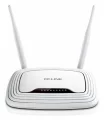
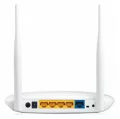

TP-Link TL-WR843ND comparisons
We've noticed that many of our visitors like to compare the TP-Link TL-WR843ND router with these popular models.
If there’s information about the TP-Link TL-WR843ND that you would like to see on this site, then write to us.
Updated: May 25, 2024



